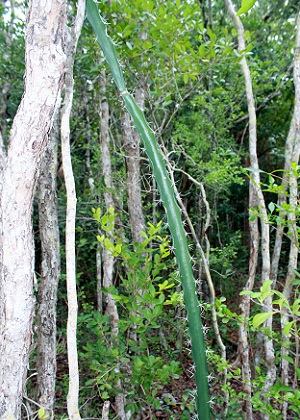
Copyright by: George D. Gann, 2013
In habitat, Everglades National Park, Key Largo, Florida
Family: Cactaceae
Group: Dicot
Substrate:
Terrestrial
Habit:
Shrub
Perennation:
Perennial
Native Range: Southeastern United States (peninsular Florida, the Gulf Coast of Texas), the West Indies (Lesser Antilles), Mexico, Central America and South America; reported from Cuba (Griseb.) and naturalized in the Virgin Islands.
State of Florida Status:
Threatened
IRC SOUTH FLORIDA Status:
Rare
Map of select IRC data for peninsular Florida
SOUTH FLORIDA Occurrence:
Present
SOUTH FLORIDA Native Status:
Native
SOUTH FLORIDA Cultivated Status:
Cultivated
Comments: Visit our
Natives For Your Neighborhood website for more information and images.
Synonyms:
A. floridanus, A. pentagonus.
FLORIDA KEYS Occurrence:
Present
FLORIDA KEYS Native Status:
Native
IRC FLORIDA KEYS Status:
Rare
Map of select IRC data for the Florida Keys
Florida Keys History and Distribution: Reported in
1913 by John Kunkel Small for hammocks in the upper Keys. First reported for the lower sandy Keys by John H. Davis in 1942. We consider this native and extant throughout the Florida Keys.
